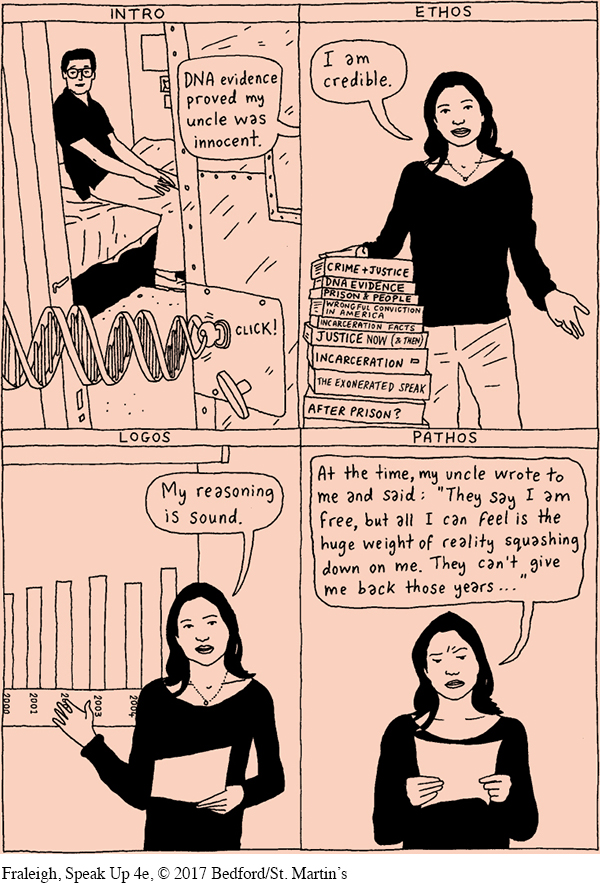Chapter 18 METHODS OF PERSUASION

Look for the  and
and  throughout the chapter for adaptive quizzing and online video activities.
throughout the chapter for adaptive quizzing and online video activities.
Page 537
“Persuasive speakers are credible, logical, and emotionally affecting.”
For an upcoming persuasive speech, Maya picked a unique topic that hit particularly close to home. Three years earlier, her uncle was released from a twenty-
Maya knew she would face a challenge in persuading her listeners. After all, not many people are wrongly imprisoned, so why should her audience members take time out of their busy lives to lobby state governments for a new policy? In short, why should they care?
To build the most persuasive case possible, Maya decided to use three powerful tools—
Page 538
Maya’s presentation proved a resounding success. By skillfully blending ethos, logos, and pathos, she not only captured her listeners’ attention but also convinced them that exonerees deserve to be compensated for the ordeals they suffer as a result of errors made in the justice system. By the time Maya wrapped up her speech, some students were jotting down the tips she shared for lobbying state governments to introduce an exoneree compensation law. Her audience embraced her proposal, and some listeners intended to take the actions she recommended—
You can use these strategies as successfully as Maya did. In this chapter, we discuss the use of ethos, logos, and pathos to create an effective speech.